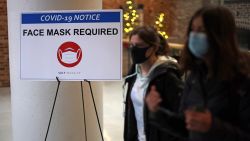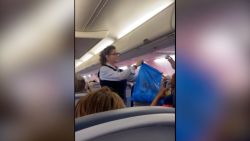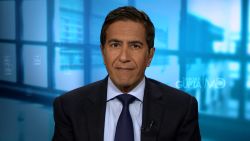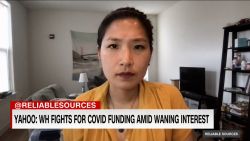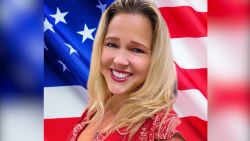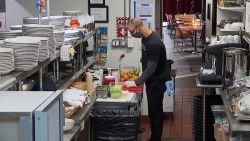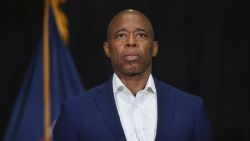For local D.C. bakery DC Sweet Potato Cake, $23,000 would have gone a long way.
The bakery, known for its eponymous little desserts, sought a Small Business Administration Covid-19 relief loan intended to keep its seven workers, including four full-timers, on payroll. The money would have given the bakery a fighting chance to complete an 11,000-cake order – a lifeline tossed out by one of its grocery partners.
Instead, on Friday, co-owner April Richardson advised three of her workers to file for unemployment.
In fewer than two weeks, the funds in the Paycheck Protection Program (PPP), a $349 billion stimulus effort heralded as a means to help the nation’s small businesses pay their workers and keep their operations running, were exhausted. Proprietors like Richardson, however, didn’t even get a taste of the spoils: Her rejection letter came midday Saturday.
In recent days, it’s been revealed how large chunks of the funds were gobbled up by chain restaurants, hoteliers and publicly traded corporations.
“It’s a reminder to small businesses that our voices are dampened,” Richardson told CNN Business. “What are we doing this for? Why are we in business just to be told we’re not good enough because we’re not big enough?”
As a result of a heavily lobbied exemption, larger food-service operations landed $10 million loans from the PPP. These include Potbelly (PBPB) Sandwich Shop and Shake Shack (SHAK), which has upward of $100 million in cash on hand, as well as Fiesta Restaurant Group Inc (FRGI)., the owner of Taco Cabana.
Kura Sushi USA Inc (KRUS)., the largest revolving sushi chain in the US, disclosed a nearly $6 million loan. Operators behind the Ruth’s Chris steakhouses and the J. Alexander’s restaurant chains received loans of $20 million and $15.1 million, respectively.
Non-restaurant companies also landed large loans, including coal miner Hallador Energy (HNRG), which announced its $10 million PPP loan alongside other liquidity maneuvers such as suspending dividends and amending its credit agreement to free up $50 million more; and windmill maker Broadwind Energy (BWEN), which said its subsidiaries received $9.5 million in PPP loans.
As of April 16, the SBA had approved more than 1.66 million loans for more than $342.2 billion, according to an agency report. Of those, 4,412 were for $5 million and above. The high-value loans represented 0.3% of the total number of loans and 9% of the overall dollar value.
On Sunday night, after this and other news stories published, Shake Shack announced it would return the $10 million loan. CEO Randy Garutti and Chairman Danny Meyer, who heads Union Square Hospitality Group, wrote in an open letter.
Getting money in workers’ pockets
The amount of money offered through the PPP was never going to be enough to satisfy the immense demand, said Jacob Vigdor, a professor of public policy and governance at the University of Washington.
“It was always going to land in some people’s pockets and not other people’s pockets,” he said.
Part of the rationale behind targeting small businesses that employ less than 500 workers is that those companies don’t have as many avenues to access capital as do larger entities, he said.
“I think in theory, it would be great if we found some neutral way of targeting exactly the right companies and deliver the money to the places where the money would make the greatest difference,” he said.
However, the bureaucratic process to create an independent commission free from lobbying pressure would take time. To be expedient, the government offered loans on a first-come, first-serve basis.
And that process favored those who already had the means for a seat at the table, he said.
“Offering a different perspective: The ultimate objective was to get money into worker’s pockets,” Vigdor said. “What does it matter if you work for a big restaurant chain or you work for a small restaurant chain? The idea is this was to help put money in your pocket.”
That’s where the proceeds from Potbelly’s loans are going, Matt Revord, the fast-casual sandwich chain’s chief people officer, said in an emailed statement to CNN Business.
“Like many other restaurants, Potbelly applied for the PPP,” he said. “Every penny will be used to financially support the employees in our shops. Congress specifically qualified restaurants for the PPP loan program because restaurant workers are vital to our economy.”
Last month, as waves of stay-in-place orders closed restaurants’ dining rooms across the country, the National Restaurant Association said its industry risked losing $225 billion in sales and between 5 million and 7 million jobs in three months.
As those restrictions have been extended, the fears have only grown for independent restaurant operators. A week after the PPP application process started, only 20% of the 1,400 respondents to a James Beard Foundation survey said they were certain they could survive the Covid-19 crisis.
Even if the large restaurants and other entities were kept out of the process, Vigdor said the result would have been the same.
“When the number of people who want it just exceeds the number available by such an order of magnitude, no matter how you handed out this money, there were going to be lots of stories about businesses left out in the lurch,” he said.
On shaky ground
Over the past two weeks, Mark Elliott has been writing Gov. Roy Cooper and his North Carolina congressional representatives, pleading for their assistance and highlighting blind spots in the PPP.
Elliott runs two restaurants and a coffee shop in Pinehurst, North Carolina, a touristy village known for its historic golf resort. At the businesses he built from scratch, the first of which opened two decades ago, he furloughed 80% of his 100 employees and lost nearly $200,000 in revenue in only 14 days.
Not only were restaurants like his competing against other businesses that experienced limited or no interruptions, but the loan terms were also not ideal for operations subject to public health closure mandates, Elliott wrote in the letters, which he shared with CNN Business.
“The loan’s limitations encourage rehiring furloughed employees without considering the current economic market,” he wrote. “How could I justify rehiring staff when, after two months in these conditions, I could be forced to fire them again?”
He applied for three loans, totaling just under $367,000, and was told by his bank that they were approved and the money has yet to come through. Elliott, who noted that other larger and better-financed operators quickly secured big loans, told CNN Business that that future programs should be merit-based.
“It is the smaller businesses that needed to be at the front of the aid line,” Elliott said. “In the best of times, smaller businesses are fragile. In our industry, especially, we can be inches from closing our doors.”
Other small business owners, such as Liana Tremmel, fear their situations are growing even more precarious.
The Chicago-area dentist, applied for a $46,000 PPP loan that would have helped to pay employees and get her Regency Dental Care back to fuller operations when stay-in-place restrictions are scheduled to lift in two weeks.
When she heard the news that the PPP money had been depleted, Tremmel was crestfallen.
“You do everything by the book; you’re trying to live the ‘American Dream’ and come to this country, work hard and do your part in the economy,” said Tremmel, who emigrated from Romania more than 15 years ago to pursue a dental career and eventually purchased her own practice. “But when it’s the other way around to help us in this crisis? It’s not fair.”


